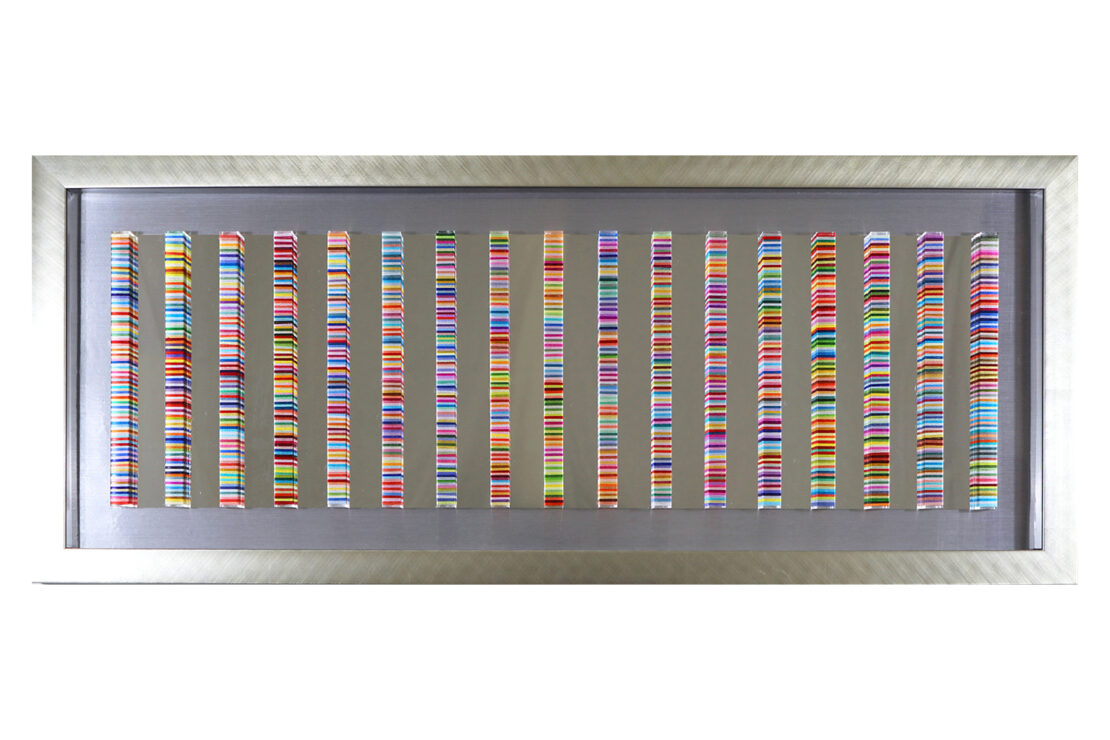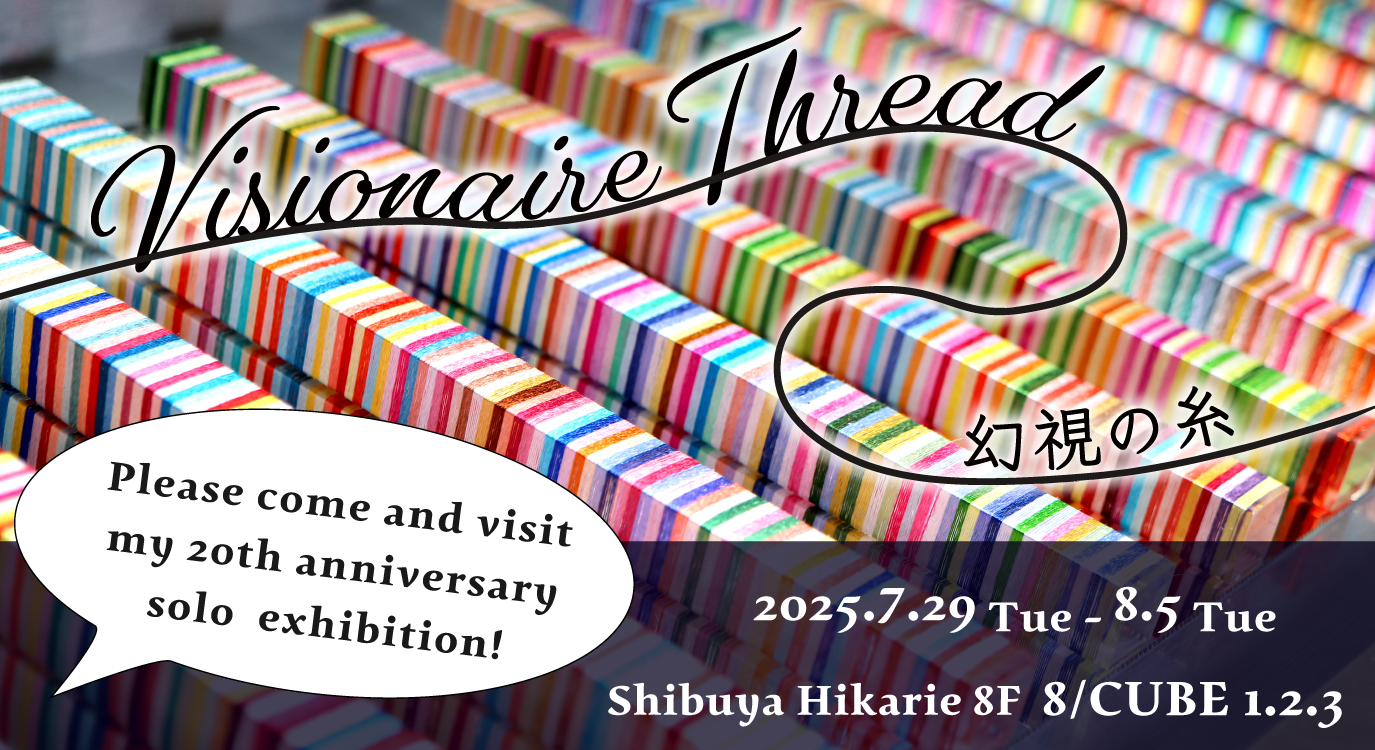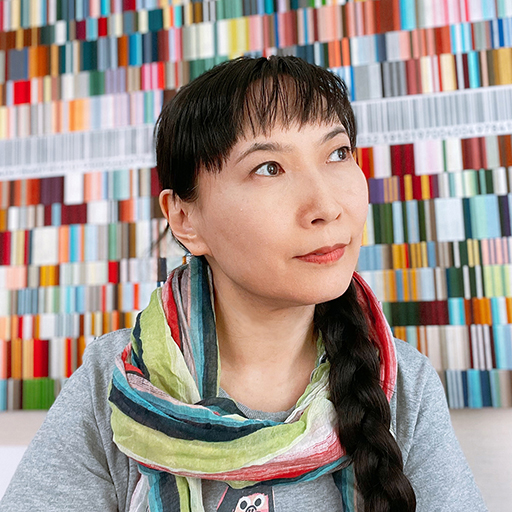I had not disclosed this before, but the “Parallel Worlds” series was created after the death of a friend, and I have now clarified this and changed the concept statement.
“Parallel World” Series – Concept Statement (Updated)
“We generate our own environment. We get exactly what we deserve.”
– Richard Bach, “ONE”
Is this a world we really desire?
Is there any ideal world somewhere else?
What do we do there?
What kind of scenery can we see there?
This series was born from a quiet moment of loss.
After losing someone important, I found myself often thinking:
“Is this really the world we deserve?”
In these works, I imagine a parallel world—not as an escape, but as a gentle possibility. Another version of life. A world where mismatched elements coexist, and strange colors find unexpected harmony when viewed from afar.
The everyday world around us may seem chaotic, but it holds a mysterious balance—just like memory, just like grief.
Through these artworks, I want to share the moment when the world, even in its disorder, begins to feel a little wider. A little softer.
The quote at the beginning continues as follows:
“We generate our own environment. We get exactly what we deserve. How can we resent a life we created by ourselves? Who’s to blame? Who’s to credit but us? Who can change it anytime we wish? But us?”
– Richard Bach, “ONE”
Richard Bach is an American author known for works like Jonathan Livingston Seagull, ONE, and Illusions.
While I’ve always appreciated the hopeful tone of his writing, after my friend’s passing, I began to question his words.
Spiritual philosophies often emphasize ideas like “Thoughts become reality” or “The Law of Attraction.”
But my friend battled a chronic illness from a young age and passed away after a long fight. I don’t believe this was a future he consciously attracted or deserved.
Bach’s works are beautiful fictions about “soul growth” and “inner journeys.” They offer comfort—but in the face of real death, loss, and irreversible grief, they can feel weightless.
The Law of Attraction suggests that wishing can make things happen—and this mindset might seem empowering.
But in reality, life is filled with sudden absences, illnesses, and uncontrollable events.
And such philosophies risk placing blame on the suffering—implying that victims are responsible for their own pain.
I created the Parallel World series seven years ago. At the time, I couldn’t articulate my thoughts clearly, and I was hesitant to explain that the works were born from someone’s death—it felt too painful and too personal.
Now, however, I’ve chosen to revise the concept and explore my long-standing discomfort with spiritual thinking more deeply.
Why Do I Feel Uncomfortable with “Spiritual” Thinking?
As a child, I loved astronomy books.
In university, I studied fashion design and once created a project themed around Native American spirituality.
I’ve always been fascinated by cosmic truths and spiritual philosophies.
Yet I’ve long been uneasy around people who blindly follow spiritual trends or conspiracy theories.
While it might seem harmless, I wanted to understand where this discomfort comes from.
I once asked ChatGPT, and the response was:
“This discomfort may arise from your deep value for intellectual integrity.
You think independently and face the world sincerely through your words and work.
From that standpoint, spiritual blind faith or conspiracy thinking may seem careless—and an affront to the principles you’ve lived by.”
That resonated with me. I value independent thinking and personal responsibility.
So, attitudes that rely on vague belief or blame feel dishonest or even disrespectful.
The Difference Between Spirituality and “Spiritualism”
True spirituality involves ethics, history, and community.
It’s different from modern pop spirituality, which often cherry-picks only the “nice parts” like healing or wish fulfillment.
Examples of genuine spiritual traditions:
- Shamanism – Healing, ritual, and communion with nature in tribal communities
- Native American beliefs – Harmony with nature, ancestral connection, and cycles
- Shinto – Respect for invisible forces, land, and daily ritual
These traditions come with cultural weight, responsibility, and depth—not just “believe what you like!”
In contrast, modern spirituality often simplifies things into “positive vibes only.”
It avoids the deeper, more painful aspects of the spiritual journey.
Spirituality Is Not Just “Healing”
Modern spiritualism often treats spirituality as:
- Positive thinking
- Connection with the universe for comfort
- Energy for self-actualization
But real spirituality begins with profound questions arising from hardship:
- Facing death
- Losing someone dear
- Living through hardship
- Feeling moved by others’ suffering
This leads to reflection, sorrow, and silence.
Spirituality isn’t about feeling good—it’s about asking: “Why am I here?” and learning to accept what we cannot control.
True Spirituality Includes Pain and Humility
Pain reminds us we are not in control.
It opens us to others, nature, and the unknown.
That surrender is spiritual.
And humility? It’s not thinking “I’m right” or “I’m special.”
It’s knowing your limits, resisting control over others, and embracing complexity.
| Pop Spirituality | True Spirituality |
|---|---|
| Stay positive | Sit with pain |
| Manifest & attract | Accept loss & question life |
| Focus on self | Connect with others and the world |
Writing this helped me clarify years of vague discomfort.
If this resonates with anyone feeling similarly, I hope it brings comfort.
The Parallel World series will be exhibited in my upcoming solo show “Visionaire Thread” at Shibuya Hikarie.
I hope to see you there.








